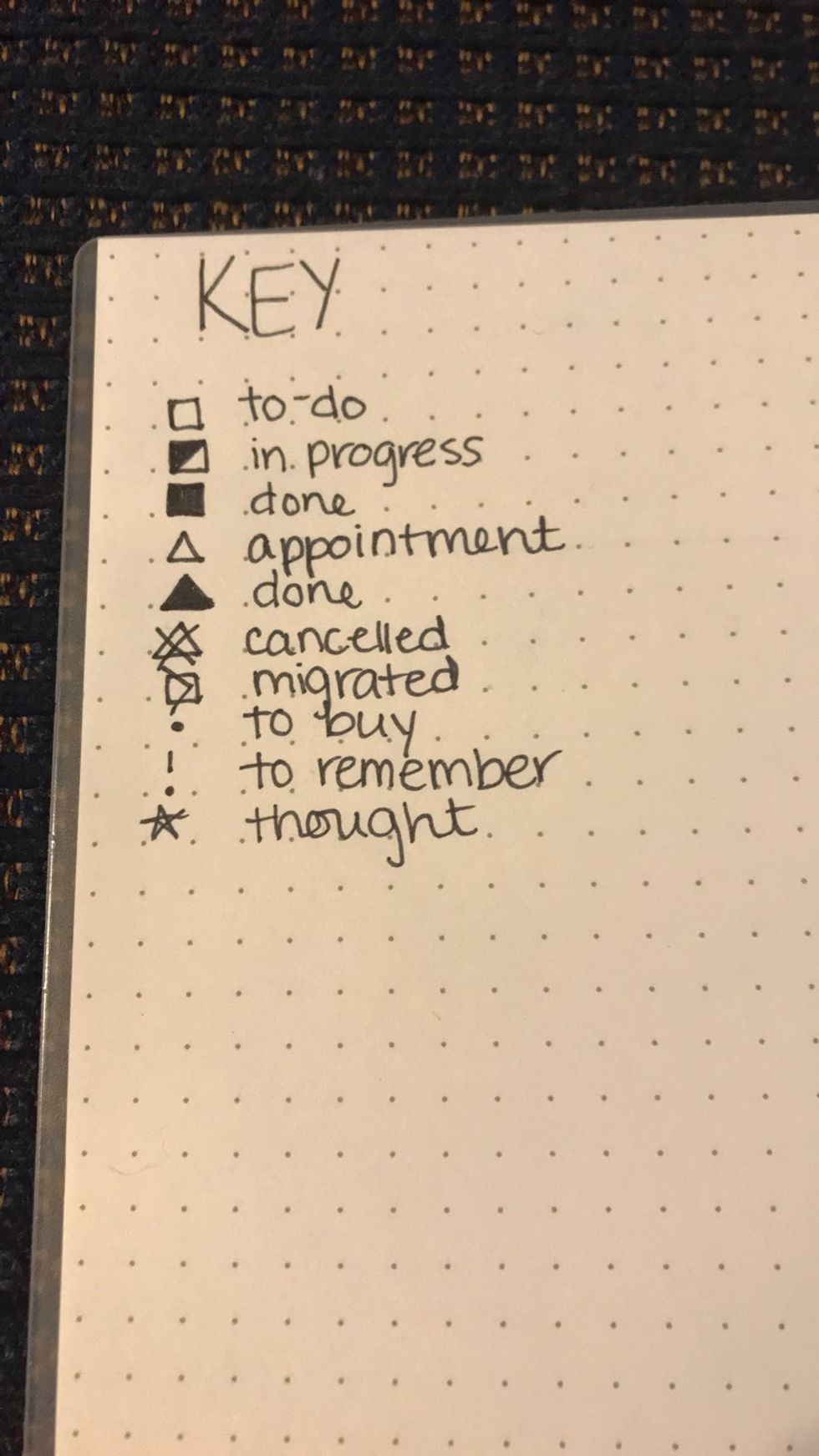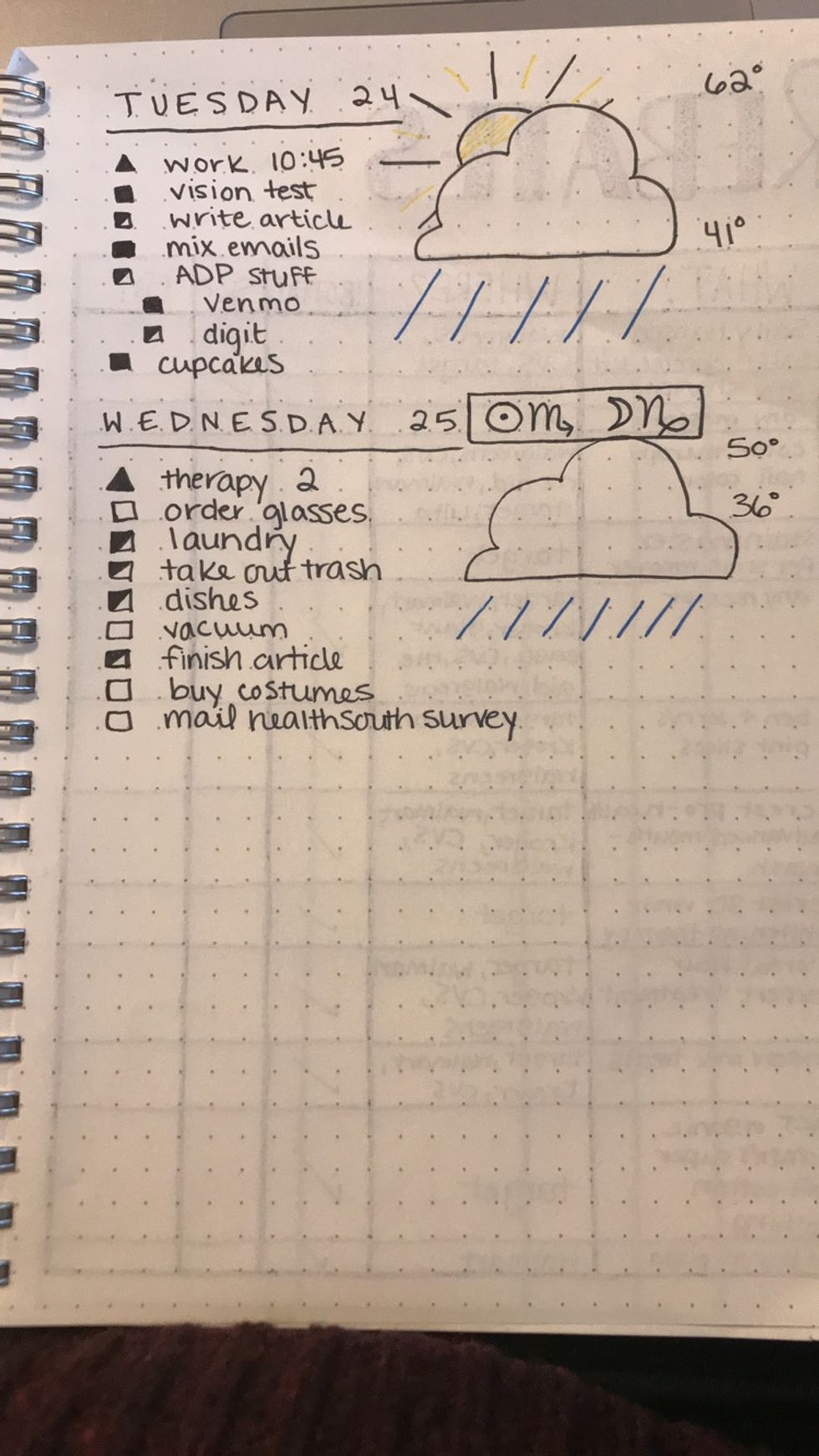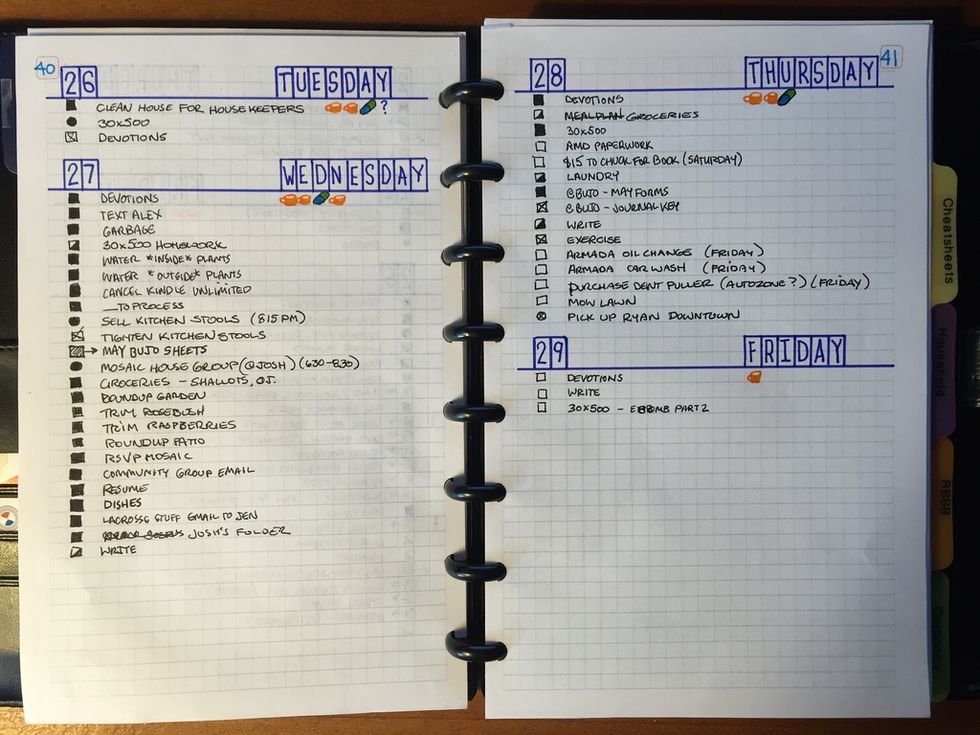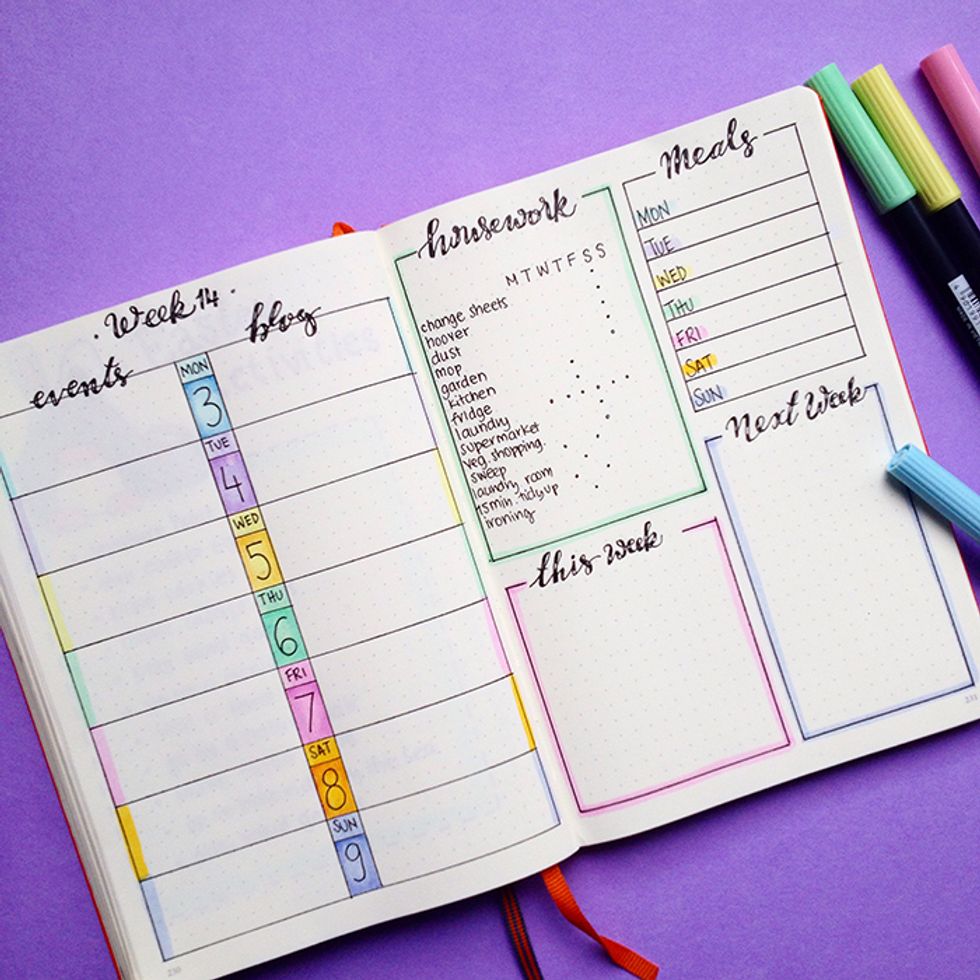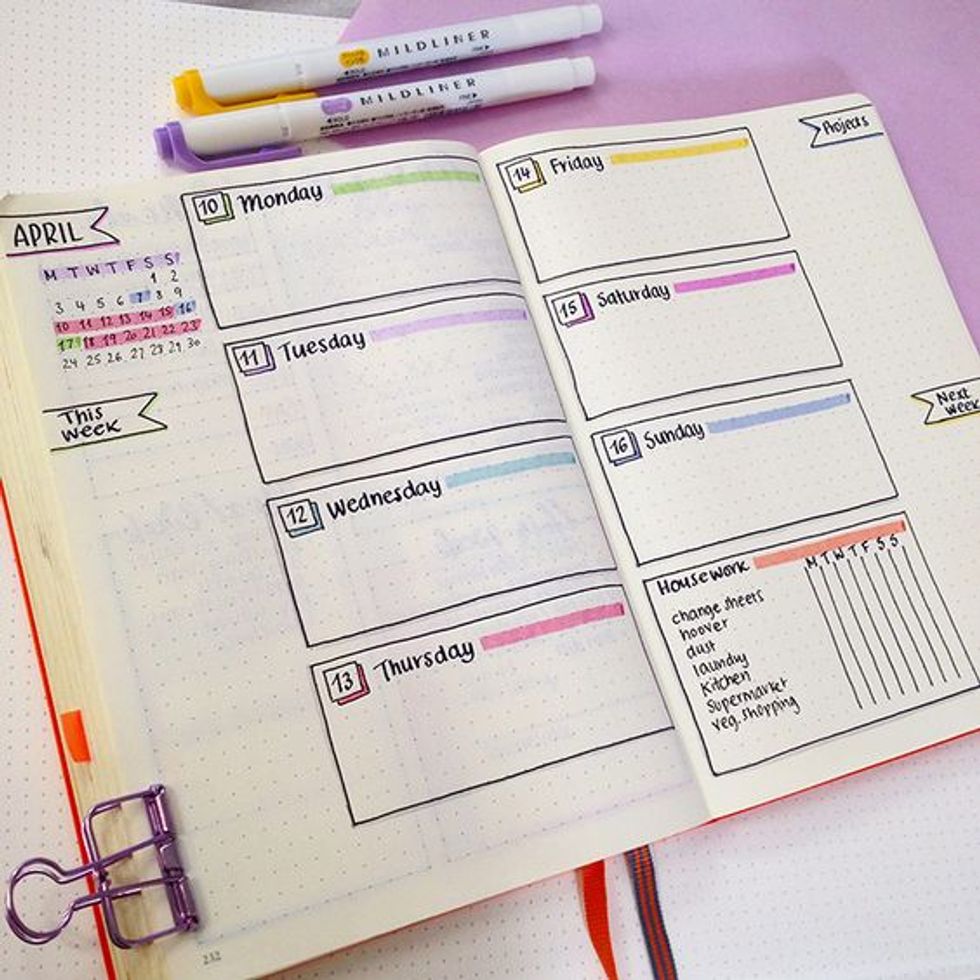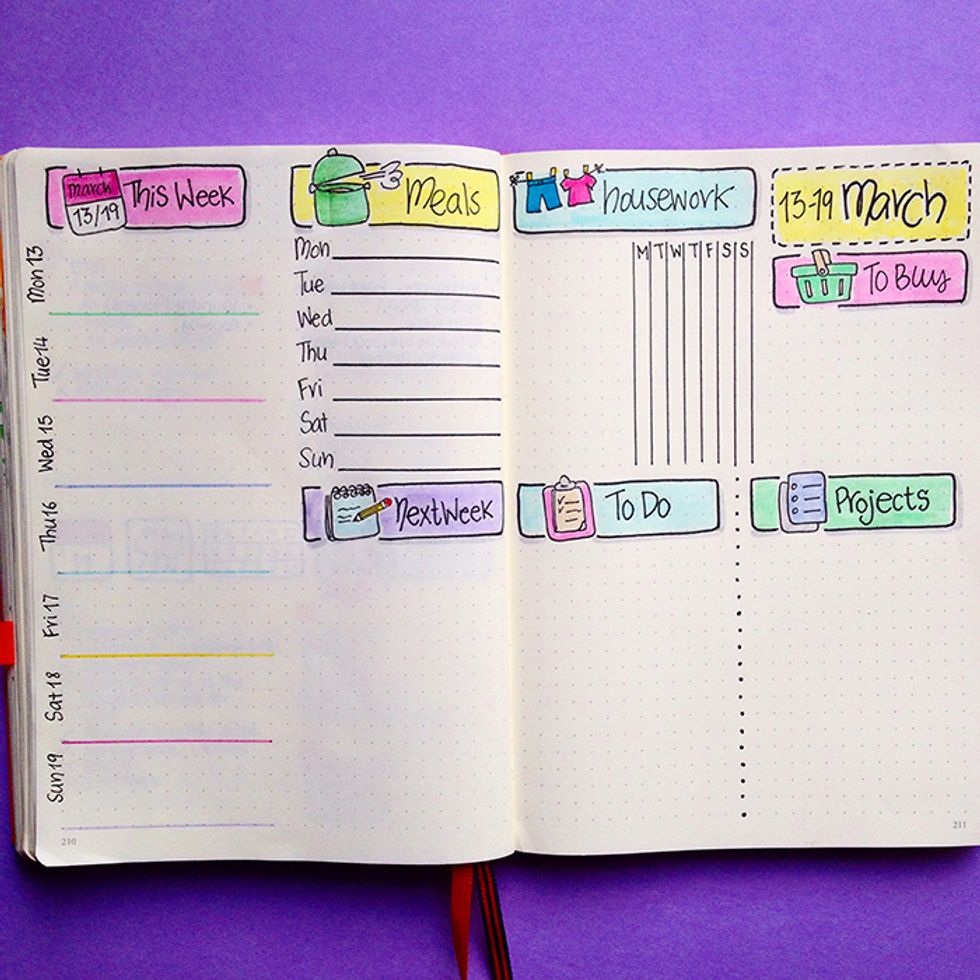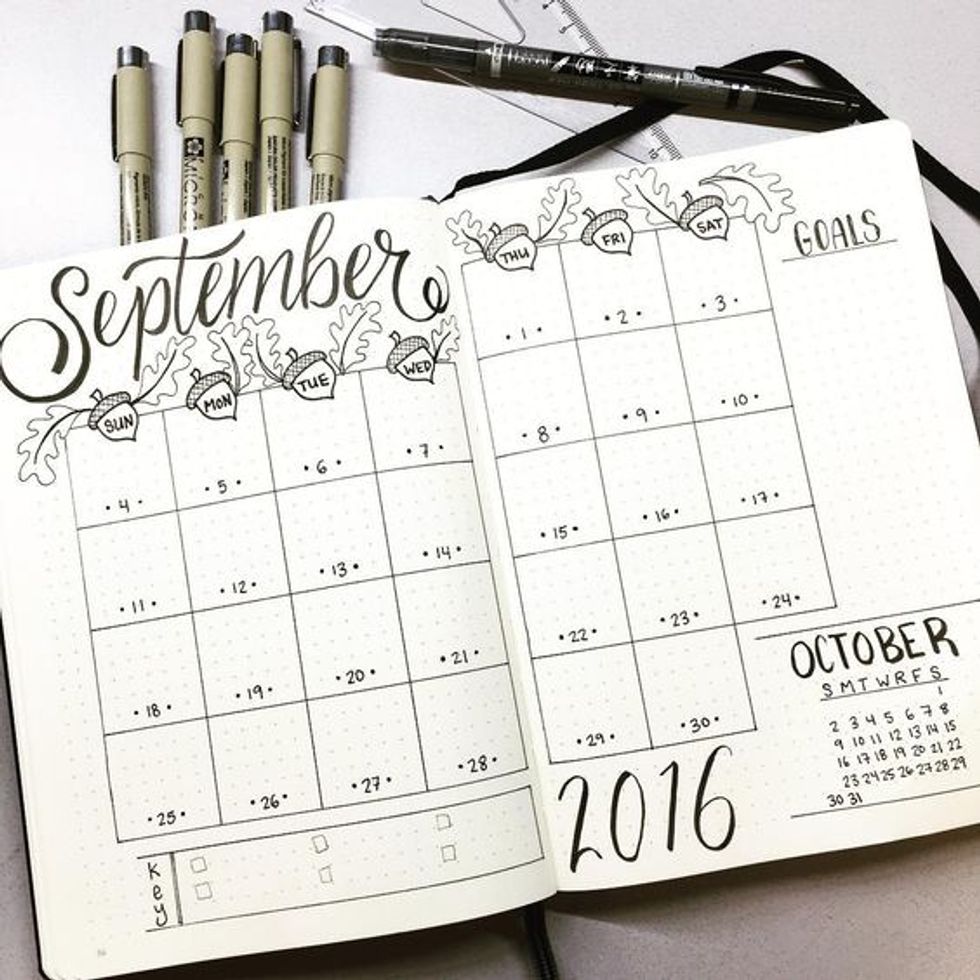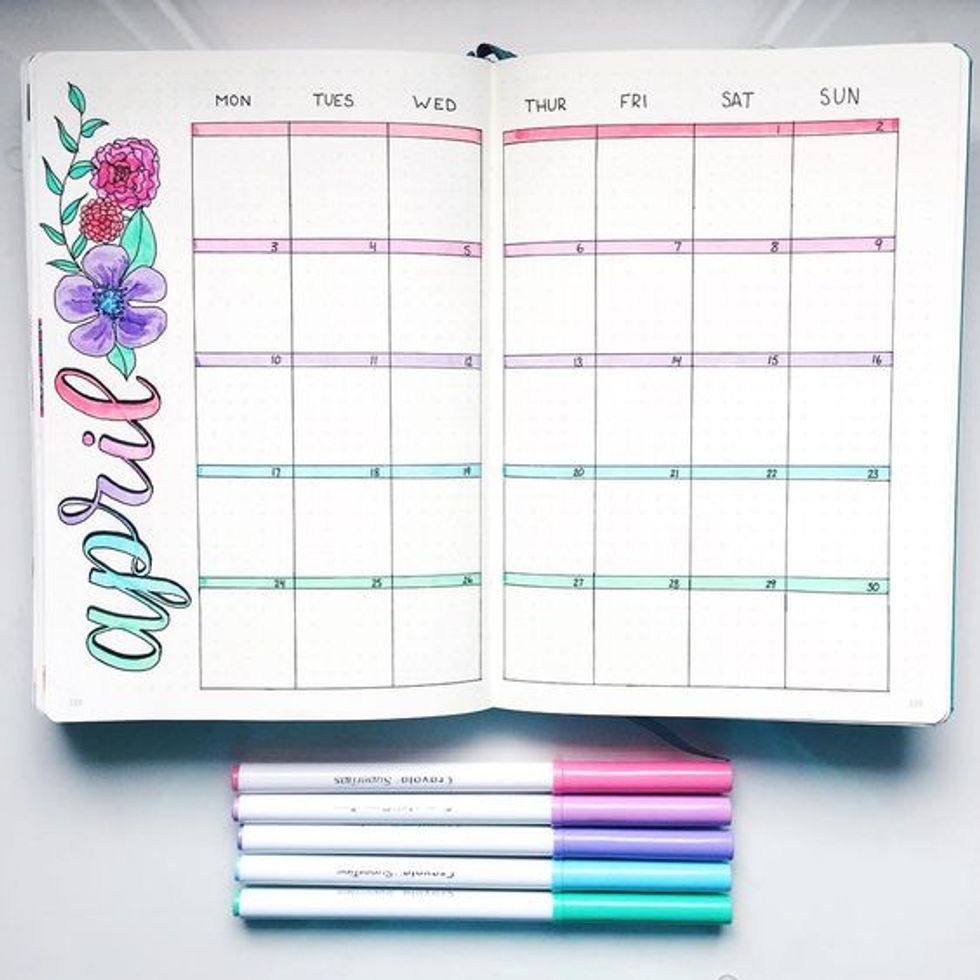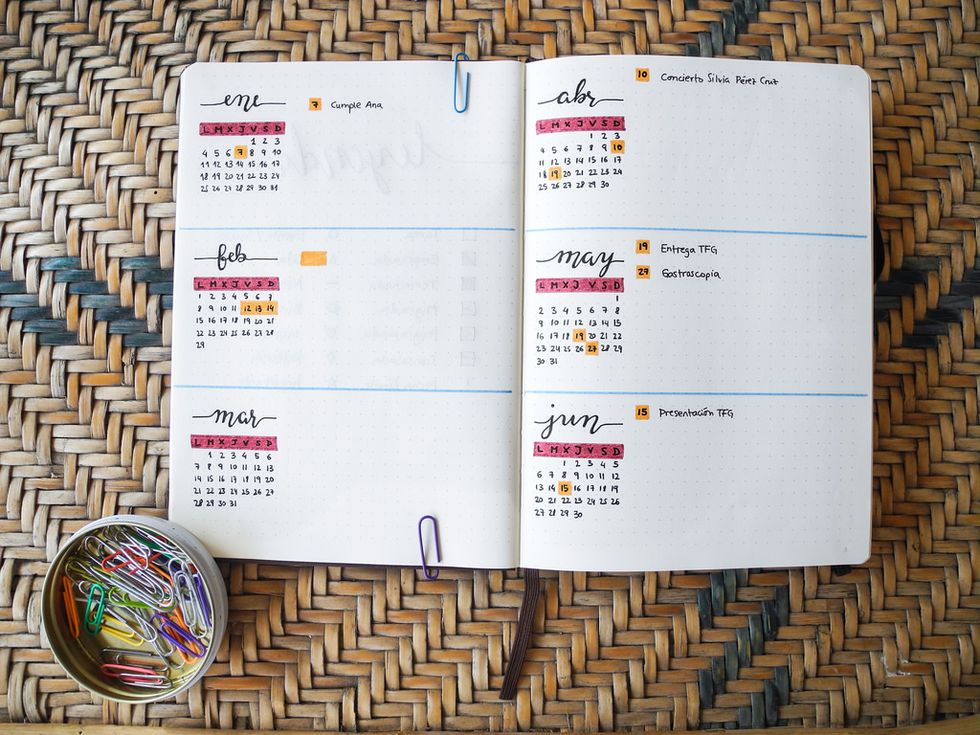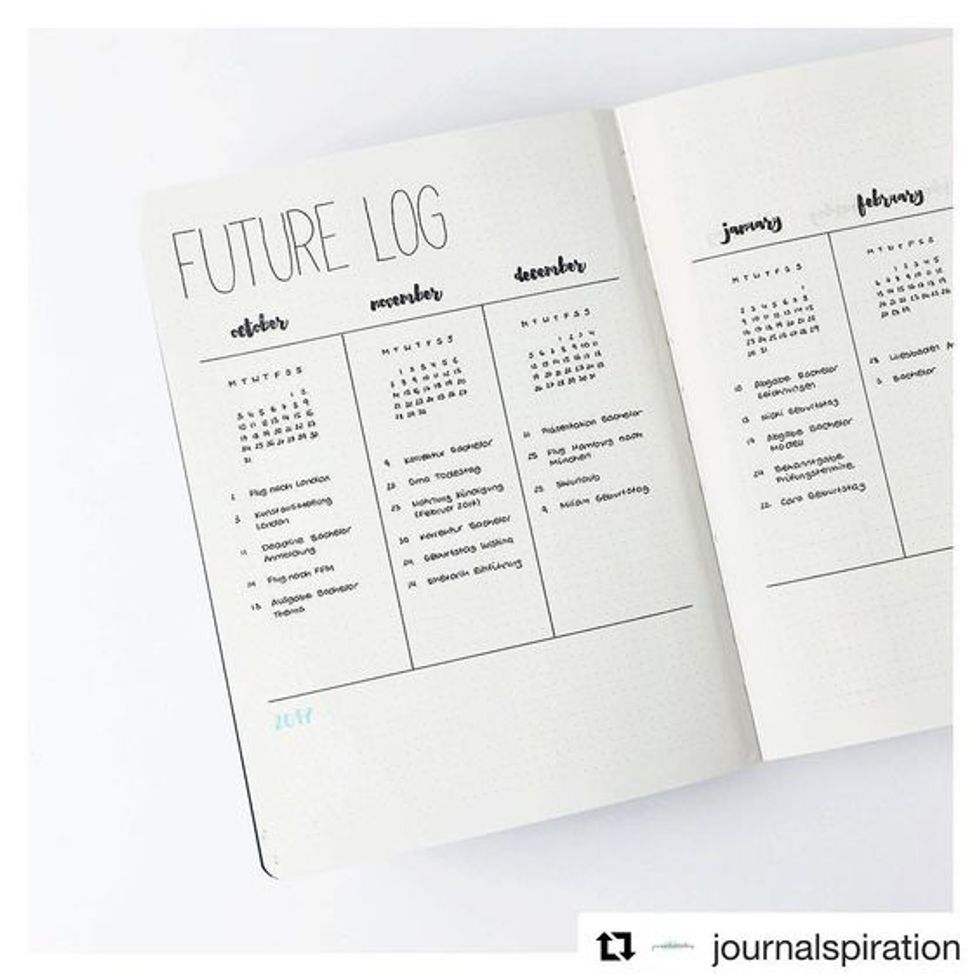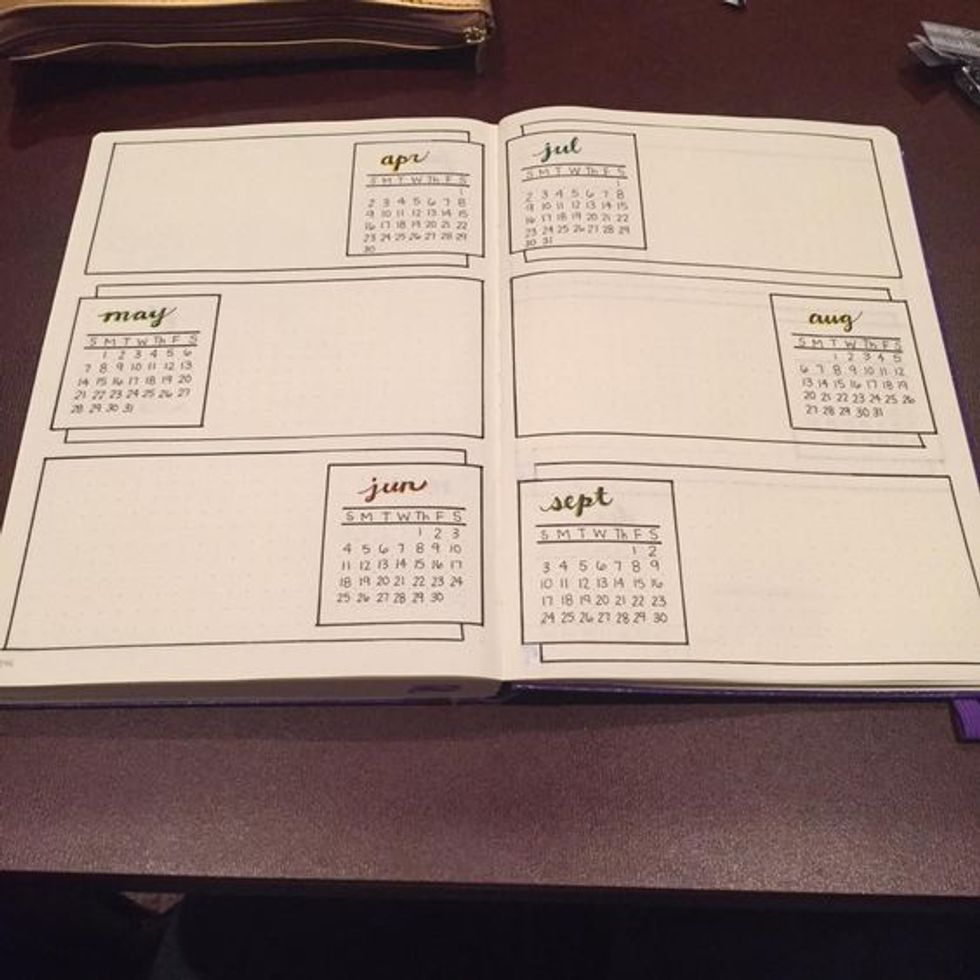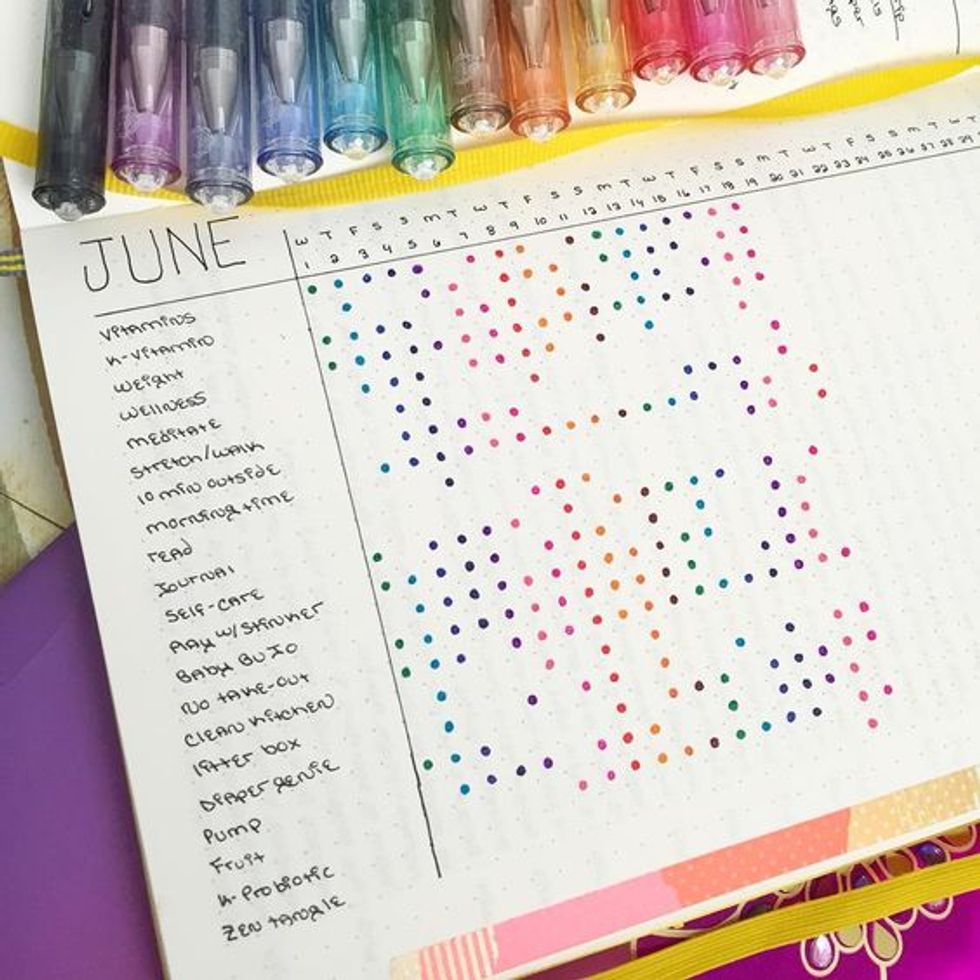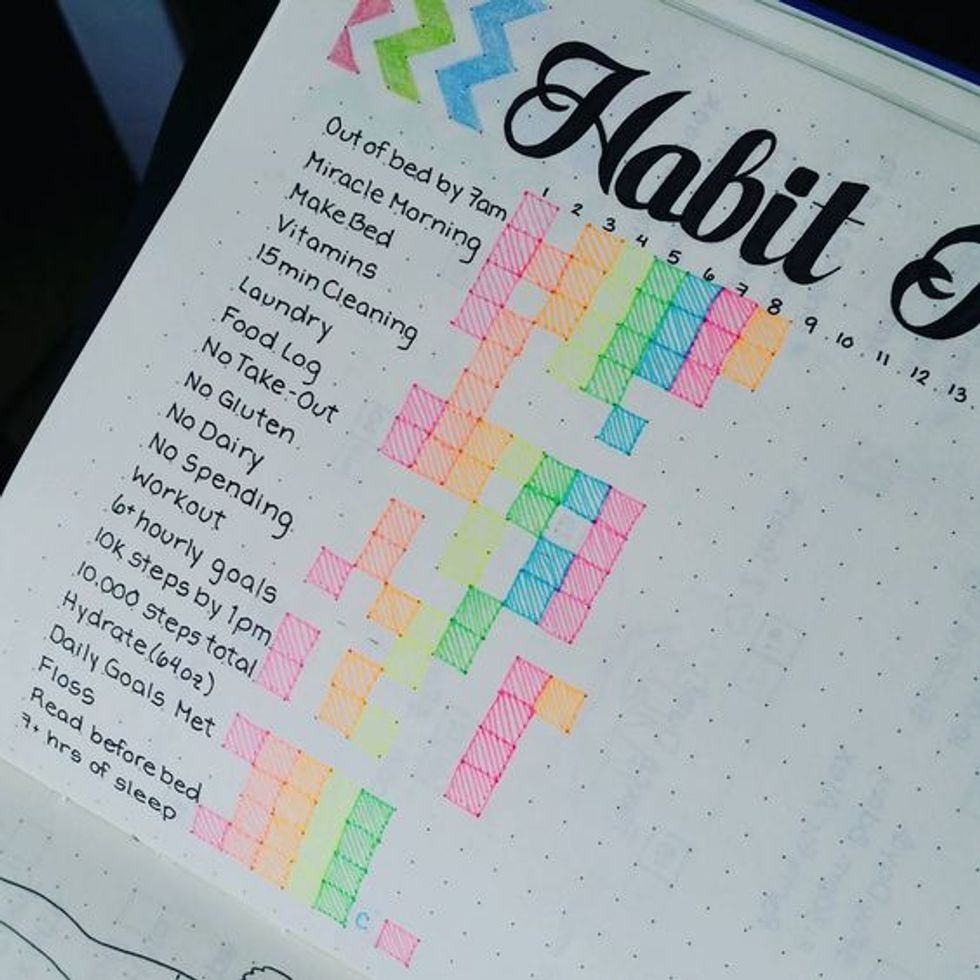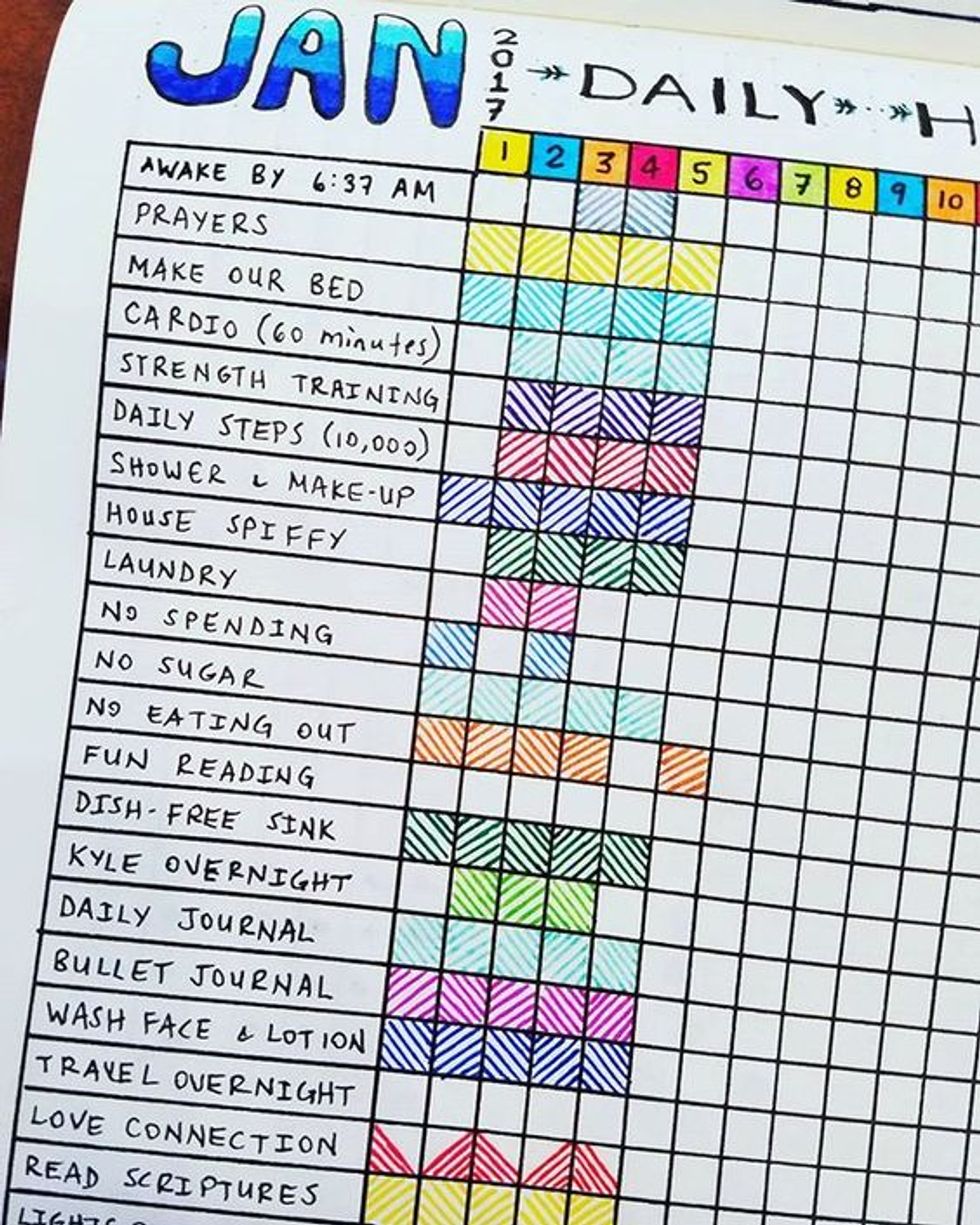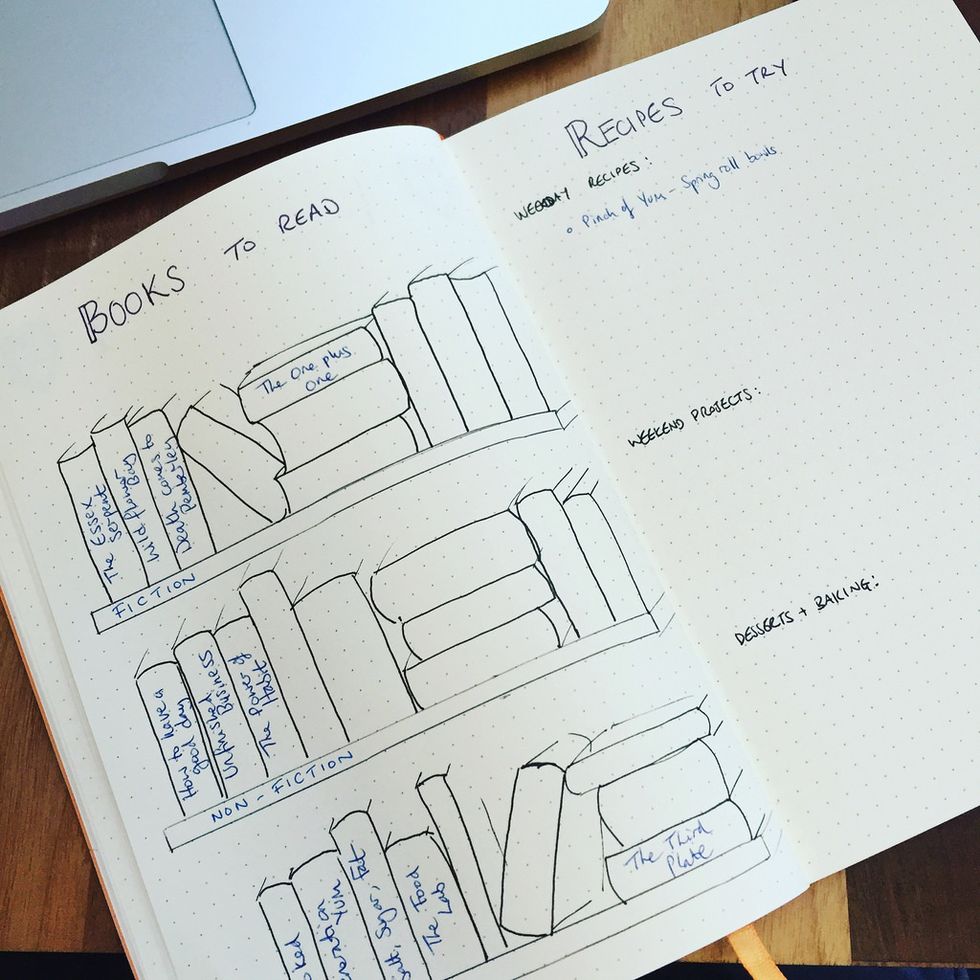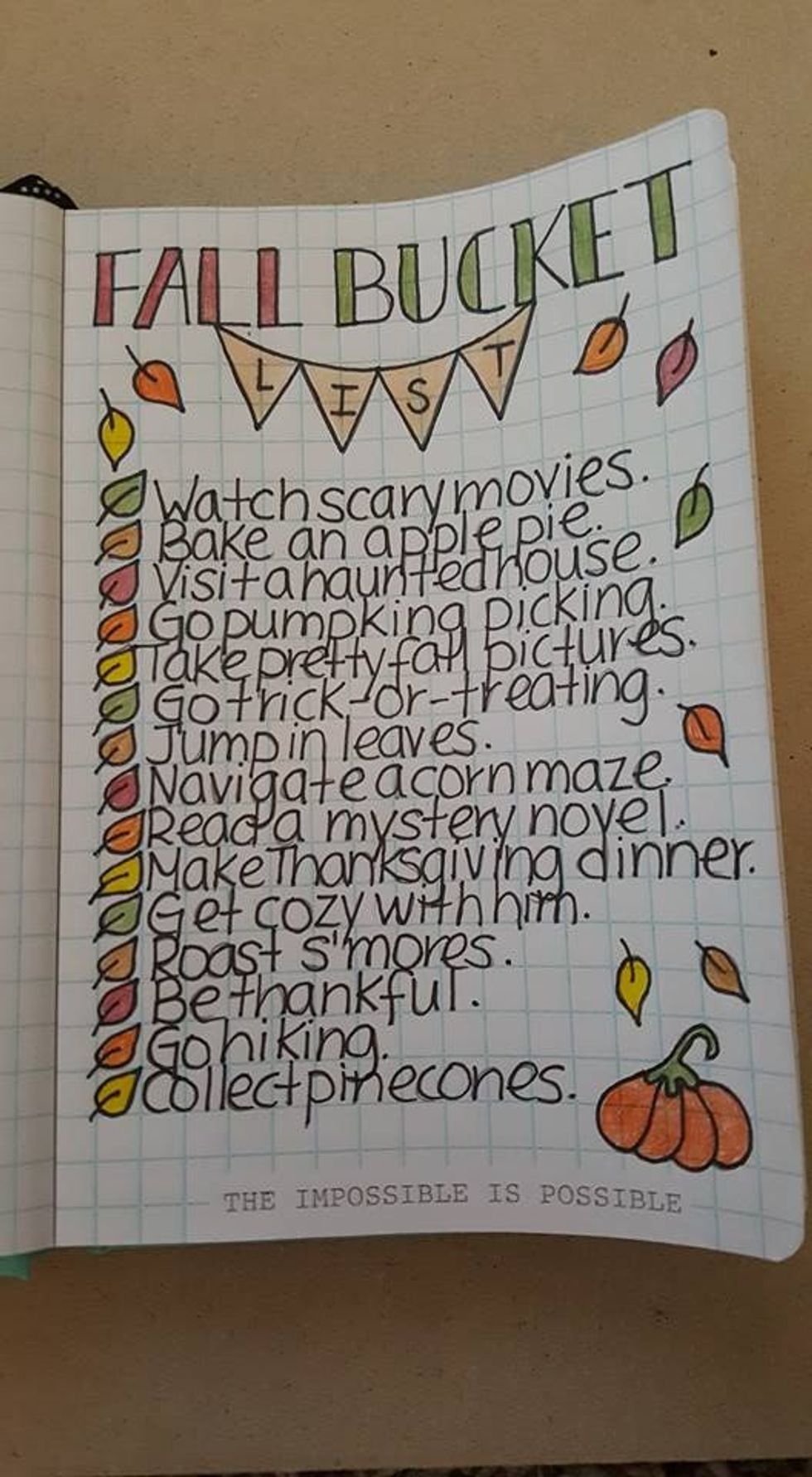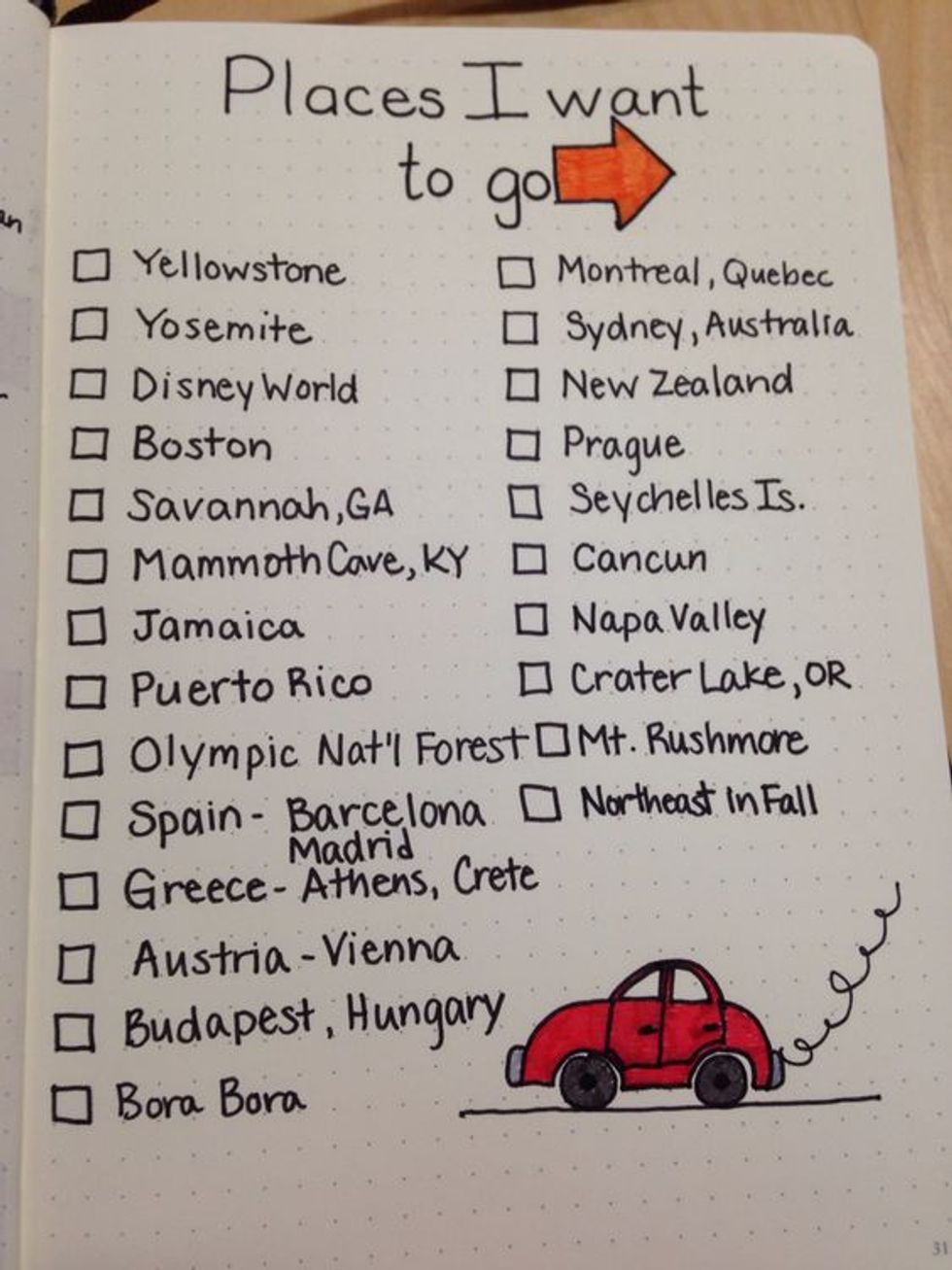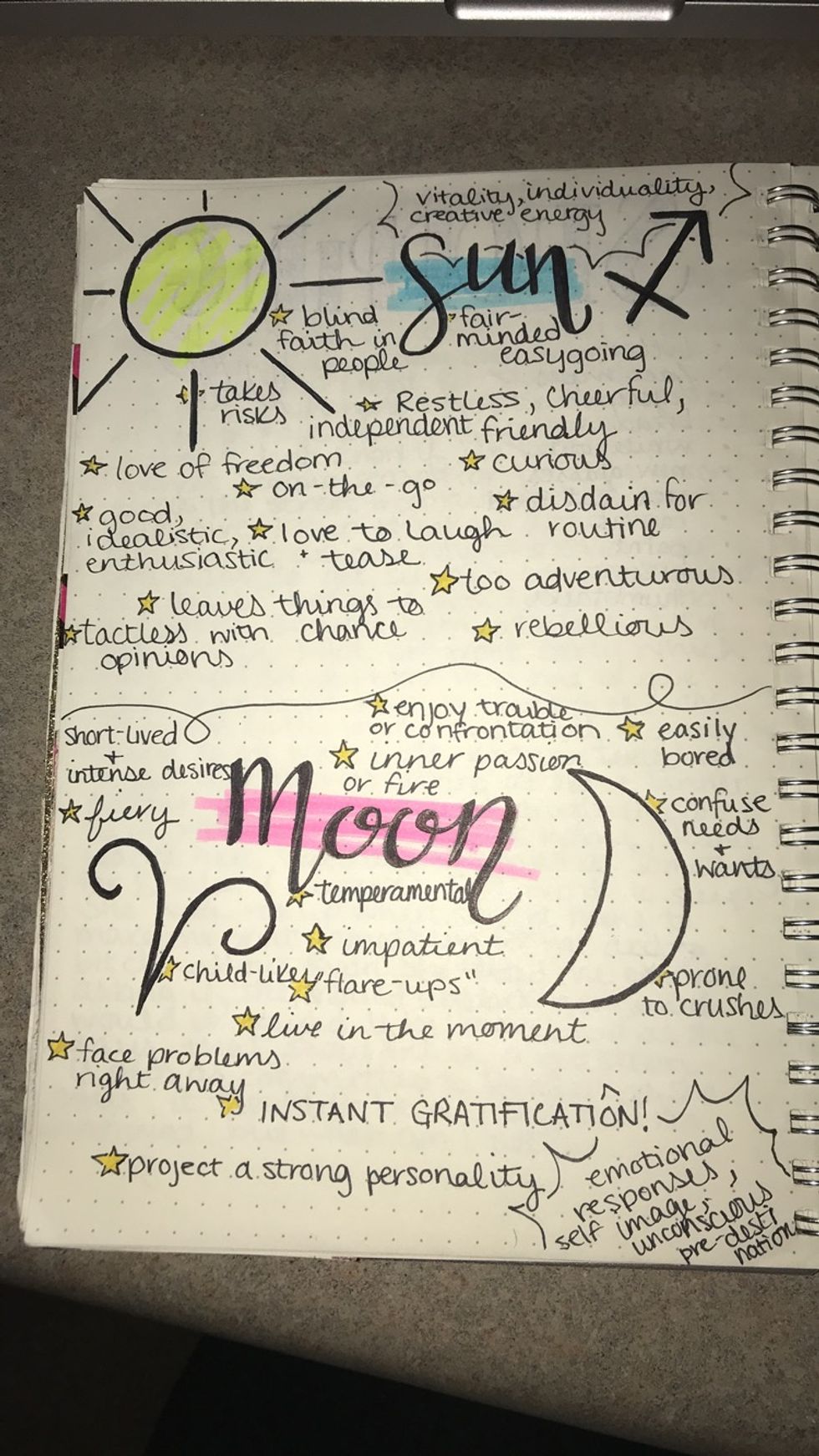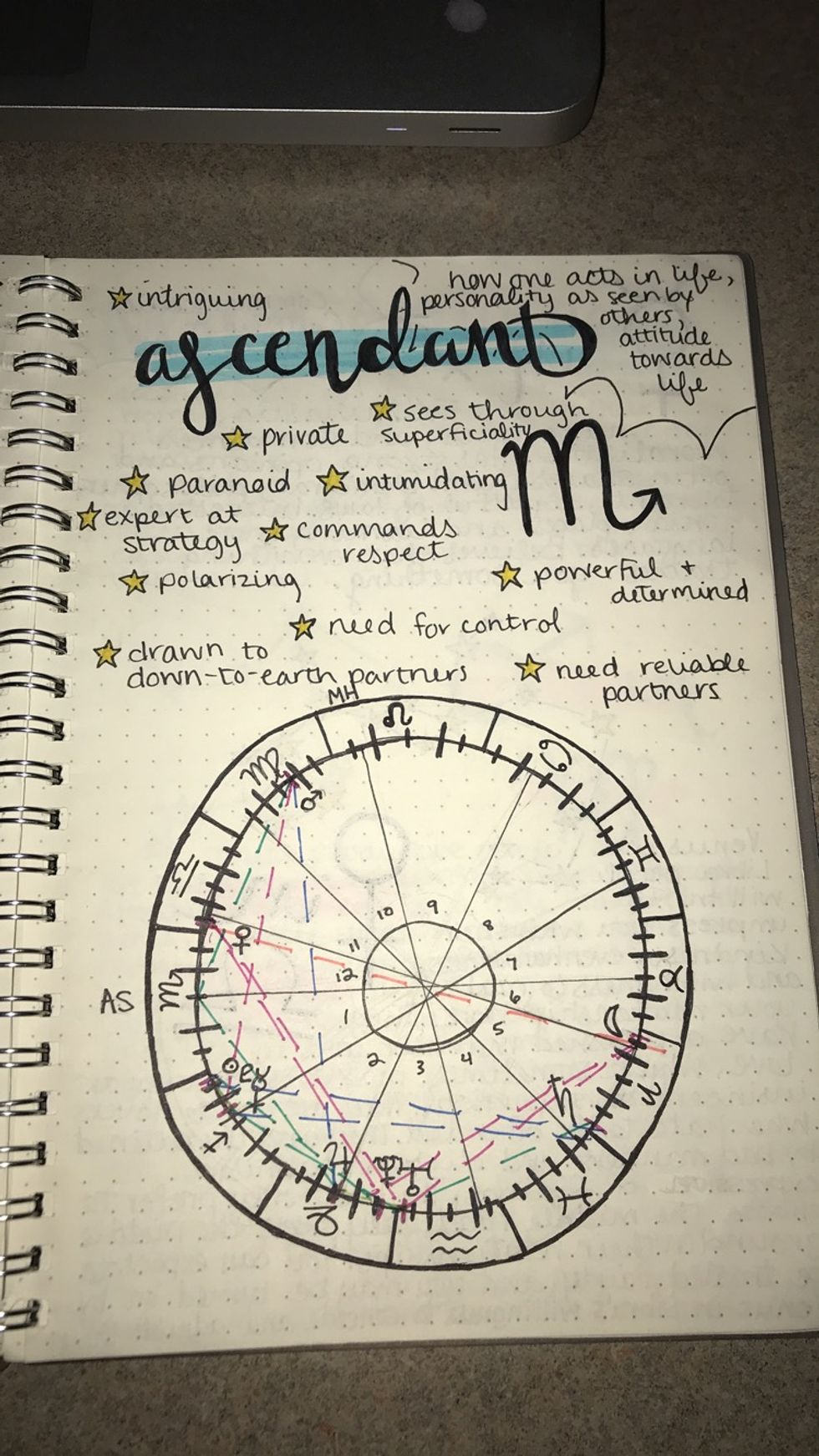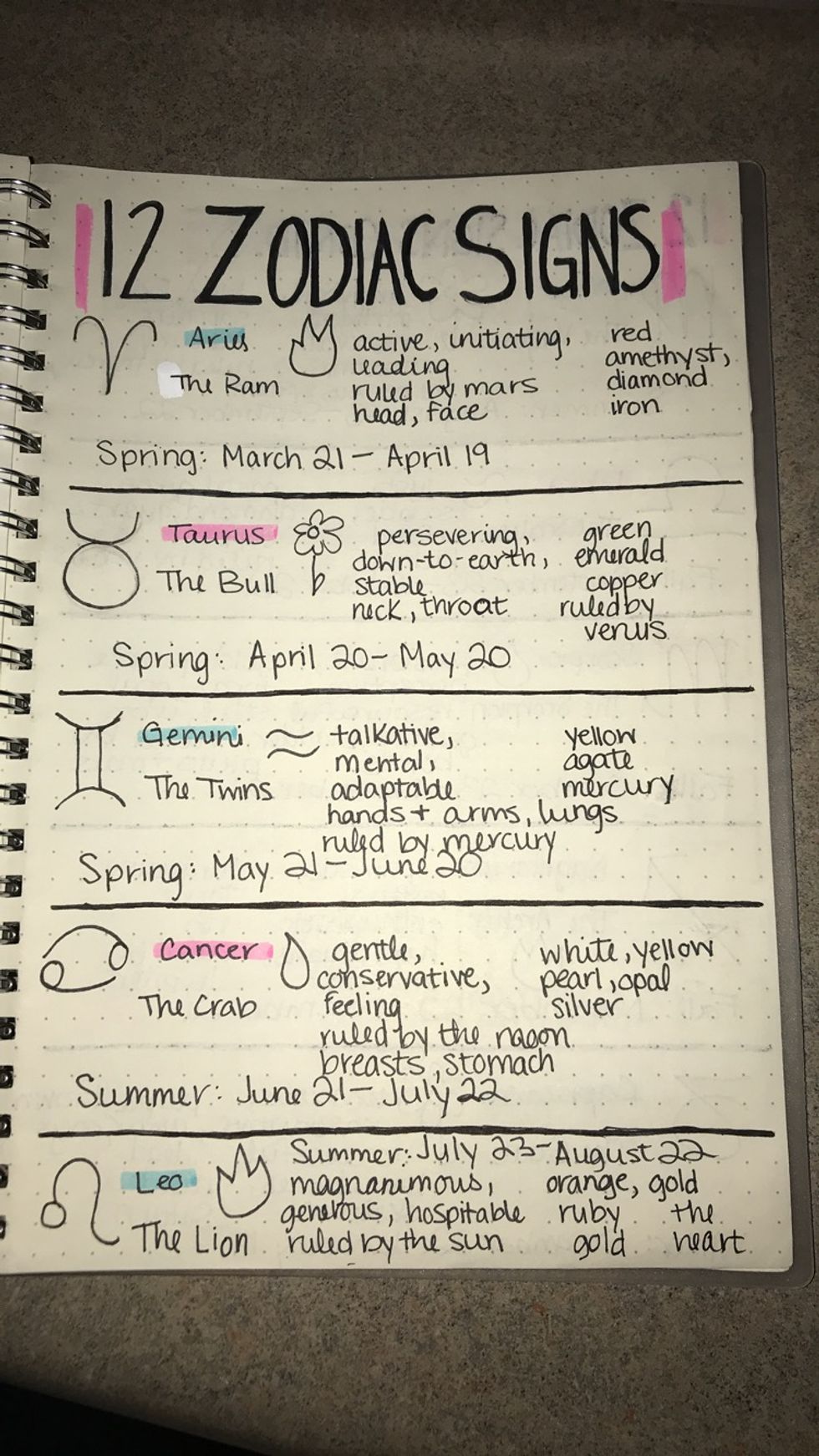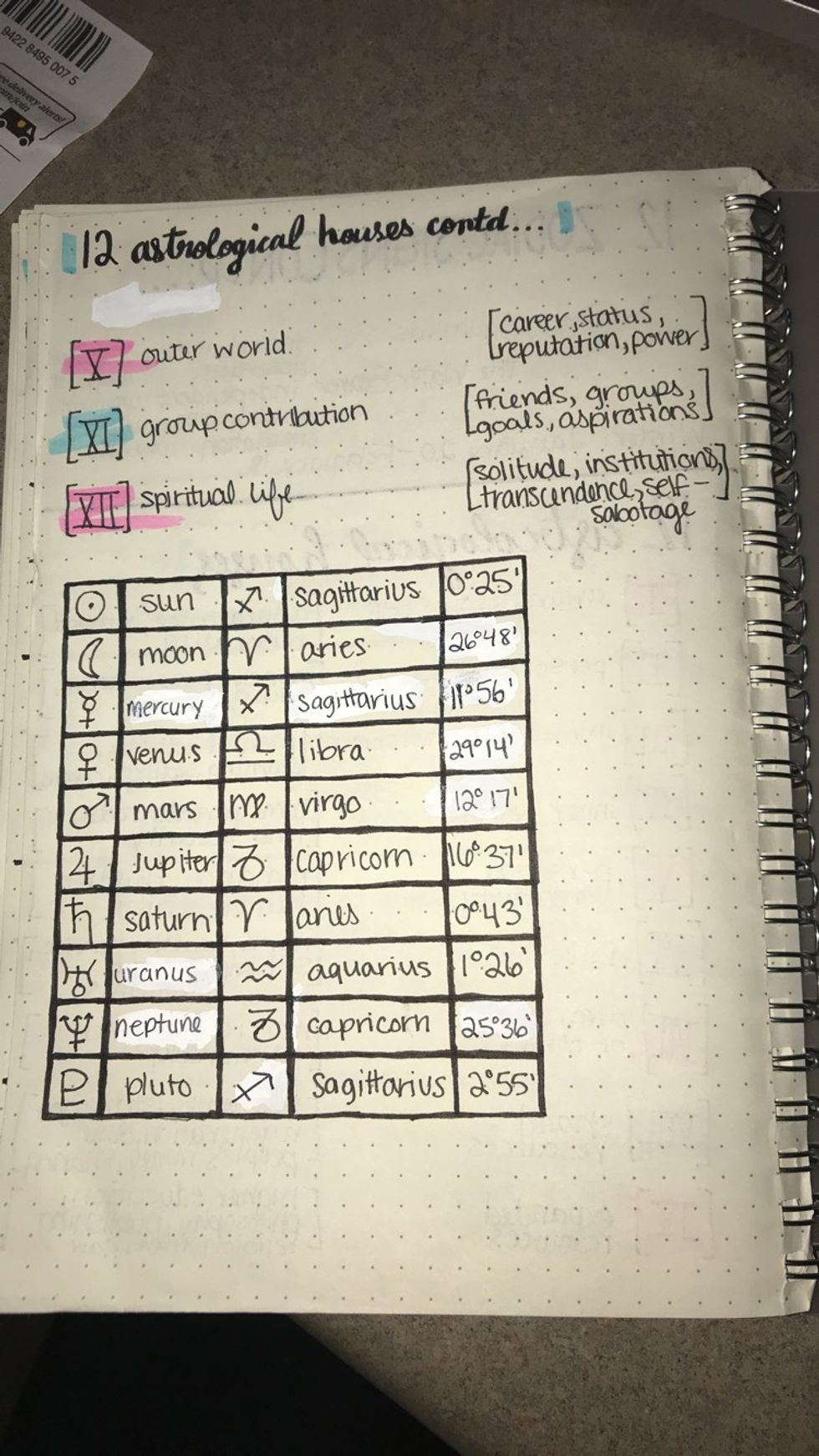If you're anything like me, you need a planner. If you're anything like me, you don't use every part of your planner. Enter: Bullet journals. Bullet journals are cool little notebooks that you can use to keep track of pretty much anything your heart desires. I'm not gonna lie -- if you're a perfectionist, this planner might be a challenge. If you're not artistically inclined, this planner might be a challenge. But it's all trial and error! Start small, then add different things! Add embellishments, stickers, color, new ideas, etc.
Supplies
First thing's first: You need supplies. Most people like to use a Lechtturm 1917 Dotted Journal for their planner, but you can use anything that has a dotted grid. I just use a generic one that I found on Amazon. It works fine, but I think I may upgrade soon. As for writing, I use Fine Point Sharpie Art Pens. They're my favorite for a few reasons: 1.) They don't bleed through the pages of my generic journal, 2.) They have assorted colors, and 3.) They're bold and satisfying to use. You can use any pens that you'd like, but it's a lot of trial and error, like I said before. Beyond those two simple things, some people like to have other supplies for embellishment. Washi tape and stickers are a few favorites of mine and other bullet journalers alike. You can get some really cute stickers for pretty cheap from Redbubble. Pro tip: Get some White-Out. Just trust me on this.
Setting Up Your Bullet Journal
Once you have your new planner, you have to set it up! The first thing I would recommend would be to simply number the pages. This will come in handy later. Leave a few pages blank to make an index. A few things that you might want in your bullet journal are daily spreads, weekly spreads, monthly spreads, and a future log. One thing you'll definitely need is a key. Everyone uses a different system for their key, but here's an example of a basic one:
This key is mainly used for your daily spread. A daily spread is where the planner part of your bullet journal comes in. Each day has a heading and a series of bullet points that correspond to your key. Once you have those down, you can keep track of a few things each day. I usually keep track of the weather, and I'm starting to keep track of the position of the sun and the moon in regards to astrology. I also used to keep track of my water intake by drawing eight water droplets, and coloring one in for every eight ounces of water that I drank. Here are a few pictures for inspiration:
Next is a weekly spread. I don't use these too much because I feel like they waste room in my notebook, but someone else may like it! You might as well try it to see if you like it. I used to make one each week until I decided that it wasn't helpful for me. A weekly spread has a small area for each day of the week along with anything that you want to keep track of. For example, if you go grocery shopping every week, you might keep track of that. You can write down weekly goals if you'd like. You can even keep track of your housework. Here are a few examples:
Next up: The monthly spread. This is one of my favorites. It can be as decorative or as plain as you want it to be. My suggestion is to start simple, then add embellishments. I have the same recommendation for each spread. Start with a simple skeleton, then add color with highlighters or colored pencils! Your monthly spread is usually just a calendar with birthdays and important dates, along with goals for the month. Here are a few examples:
And lastly, my favorite spread: The future log. You can use your future log for the next six months or the next year. I usually use the next six months, personally. The future log consists of small calendars and the important dates for those months. Here's some inspiration:
Collections
Now for the coolest part: Collections. I keep track of a lot of different things in my bullet journal. Collections are pretty much any pages that aren't your normal spreads. I have a "habit tracker" for the month of October that has several different categories. Written down the side are different habits that I want to keep track of, and from right to left are the dates of the month. Some things I've kept track of are as follows: "Antidepressant", "Up before noon", "Food log", "All meals", "Caffeine", "Alcohol", "Shopkick", "Reading", "No spending", "Stretching", "Emails", "Litter box cleaning", "Practicing", "Washing sheets", "Vacuuming", "Groceries", "French", "Writing", "Pore strips", "Work", "Exercise", and "Taking biotin". Further down the page, I wrote a few different emotions to try tracking how my new antidepressant is working. The emotion categories I picked were "Restless", "Tired", "Anxious", "Mad", "Sad", and "Happy". As I do a certain thing or feel a certain emotion, I color in the corresponding block. This is a good way to see which habits I'm keeping up with and which ones I need to work on. Here are a few other habit trackers:
Some collections that I have are "Shows to Watch", "Movies to Watch", "Books to Read", "Important Passwords", "My Birth Chart", etc., but you can keep track of pretty much anything. Here are some examples:
I said earlier that I keep track of some astrological things in my bullet journal, and I'm actually really proud of my spread! Here are a few pictures that prove that you really can use your journal for whatever you'd like:
If you need more inspiration, try searching "bullet journal" or "plan with me" on youtube! Here are some really helpful videos that I found:
Happy bullet journaling!


